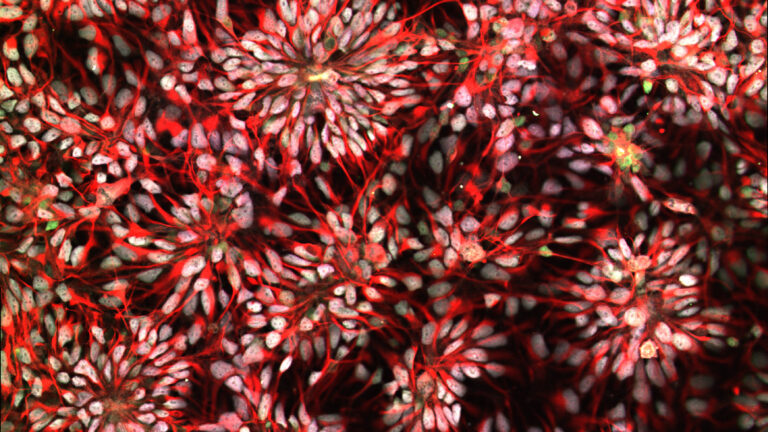Neural progenitor cells derived from stem cells of a person with Down syndrome. Credit: Hiruy Meharena, UC San Diego
Down syndrome (DS) is the most common chromosomal condition diagnosed in the United States, with approximately 6,000 babies born with it or roughly one in every 700 live births.
There are three types of DS, but the vast majority (95 percent) have trisomy 21 in which every cell in the body has three separate copies of chromosome 21 instead of the usual two. The extra chromosome 21 leads to the physical features and developmental challenges that can occur among people with DS. And researchers have long hypothesized that it’s the overabundance of the proteins encoded by the genes that reside within chromosome 21 that results in the signs and symptoms of DS.
But new research, led by Hiruy Meharena, PhD, an assistant professor in the Departments of Neurobiology and Molecular Biology in the School of Biological Sciences at UC San Diego, with colleagues at Massachusetts Institute of Technology, implicates a new culprit: senescent cells.
Senescent cells are unique in that they eventually stop the normal process of replicating, but don’t die when they should. Instead, they behave like the cellular undead, continuing to release chemicals that can trigger inflammation. They have been linked to a number of age-related diseases, from osteoarthritis and cardiovascular diseases to lung fibrosis and fatty liver disease.
Though the study was small and preliminary, its findings are intriguing.
“That senescence might be playing a role in the neuropathology of Down syndrome is very interesting,” Tamir Chandra, a molecular geneticist at the University of Edinburgh who was not involved in the new study told STAT. “That opens a new door for exploring potential interventions.”
Investigations into the neurological underpinnings of DS and consequences are broad and expanding. For example, improved health care has measurably extended the life expectancy of persons with DS. It has also meant that they are three to five times at greater risk of developing Alzheimer’s disease, and that it will appear much earlier in life. Virtually all DS patients display the neurological pathology of DS by age 40.
William Mobley, MD, PhD, heads the Down Syndrome Center for Research and Treatment at UC San Diego School of Medicine, one of the first programs in the country to connect academic research with treatment of adults and children with Down syndrome.
— Scott LaFee
